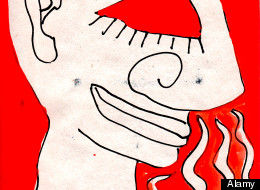OF THE
TIMES
We'll know our disinformation program is complete when everything the American public believes is false.
"Both layers are normally invisible to the human eye." Liar. They are visible, but overwhelmed by brightness of the rest of the disk. You're not...
Intriguing how they got that nice, smooth, round hole in the 'ornament'.
Is it any wonder much of the world is turning away from the U.S.? Even those nations who have historically turned a blind-eye to American...
So... sixty billion dollars from three hundred fifty million Amaricans is about $175 from each American. My answer to Zelensky is "No." We've...
. The politicians' Creed: . . NOTHING IS FORBIDDDEN AND EVERYTHING IS PERMITTED
To submit an article for publication, see our Submission Guidelines
Reader comments do not necessarily reflect the views of the volunteers, editors, and directors of SOTT.net or the Quantum Future Group.
Some icons on this site were created by: Afterglow, Aha-Soft, AntialiasFactory, artdesigner.lv, Artura, DailyOverview, Everaldo, GraphicsFuel, IconFactory, Iconka, IconShock, Icons-Land, i-love-icons, KDE-look.org, Klukeart, mugenb16, Map Icons Collection, PetshopBoxStudio, VisualPharm, wbeiruti, WebIconset
Powered by PikaJS 🐁 and In·Site
Original content © 2002-2024 by Sott.net/Signs of the Times. See: FAIR USE NOTICE

...psychopaths can't tell that they stink!